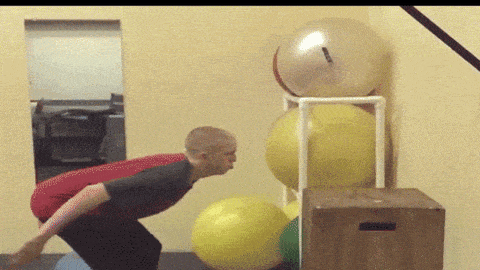- Strength Framework
- Posts
- How to optimize muscle growth 💪
How to optimize muscle growth 💪
Conditions that must be met.
This week we will cover the conditions, regardless of your training programme, that must be met in order to grow muscle. This is applied whether your trying to grow your glutes or your biceps 💪

Gif by theoffice on Giphy
All muscles respond to growth, some people, due to muscle insertions and genetics, may find they have an easier time growing certain muscles over others and that’s just life ✌️
If your just starting out in the gym, the “noob” gains will eventually stop. With the novel stimulus of just being more active and eating more protein, you should see pretty quick changes in your body composition but that will slow down and eventually you’ll have to make sure you are meeting the criteria in this email to ensure you can optimize your muscle growth.
The Conditions
Proximity to Failure - We need to train within close proximity to failure. A solid way to do this in your training is to use the Reps in Reserve method of measuring this (0-3 RIR). This means you train 0-3 reps away from failure. Majority of the time you’d actually be best to train 1-3 reps away from failure, as training to failure, especially on high fatiguing movements such as squats, will have a high systemic fatigue cost. But smaller movements later in your session won’t have as high of a fatigue cost, like chest flys or curls, on the last set you could take it to failure. It’s a cost vs rewards strategy you should take here, with the earlier weeks of your training plan being at the 2-3 RIR side then as you progress through the weeks with weight and volume closer to the 0-1 RIR then deload!
Mechanical Tension - We want sufficient weight and stress applied to the muscle in order to create enough stimulus to grow. How much weight is needed? We know hypertrophy occurs in the 5-30 repetition range, provided we are training in close proximity to failure (0-3 RIR as described above). So pick a weight that will have to at close to failure within your target repetition range for any given movement.
Sufficient Volume - Unless your more special than the rest of us, one set per week just won’t cut it. Think of how much volume your body can handle as a glass, and each set as 100 ml of water, you can only fill it up so much before it overflows, similar to your recovery. So we want enough volume to cause muscle growth but not so much we can’t recover from it before the next training session. Generally you are looking at 3-10 sets per muscle / per session, and 10-20 sets per muscle / per week (on average for most people). A study by (SCHOENFELD et al., 2019) showed a dose response relationship between hypertrophy (Muscle growth) and volume, but as I stated above there is a volume limit which will be different for everyone depending on several factors including recovery, muscle specific volume limits and whole body systemic volume limits.
Progressive Overload - As we get stronger and adapt to training, we must keep pushing from where we once were. Whether that’s by adding weight, reps, sets. We must progressively overload our training to drive a stimulus response. Full article guide can be found HERE.
Caloric Surplus - You need to fuel your body with the nutrients to perform in the gym and to recover and build new muscle tissue afterwards. Sufficient calories, protein, carbs and fats are required for this.
Sleep - You recover and grow while you sleep. Poor sleep quality or not enough of it, can siverly impact your training performance and body composition. You won’t recover for your next session, motivation and energy can be low and progress will slow or stall. Sleep also helps regulate your cortisol levels.
Stress - Small amounts of stress will have zero impact on your performance and fitness goals, however higher than normal stress levels for extended periods of time can impact your fitness goals and muscle growth due to your body releasing higher concentrations of the stress hormone, Cortisol. Cortisol blocks recovery and muscle growth through inhibiting the release of testosterone, which is the body’s most important growth hormone for muscle development.

Gif by YellowstoneTV on Giphy
Note 1 : Cortisol isn’t all bad - it’s what gives us our fight or flight response as humans. A full length article will be published on the website soon addressing stress and its effects. Remember this email is a 5 minute monday morning read!
Note 2 : Life happens, whether it’s stress from your job, a break up or a death your grieving. Maybe your a new parent with a newborn and your sleep is totally shot, control what you can and improve where you can ✌️
Want to share this with someone else?
If this was sent to you and you’d like to get next weeks, hit the button below!
Stay Safe out there Folks ✌️

Gif by afv on Giphy
Happy Lifting,
Mark,
Strength Framework
